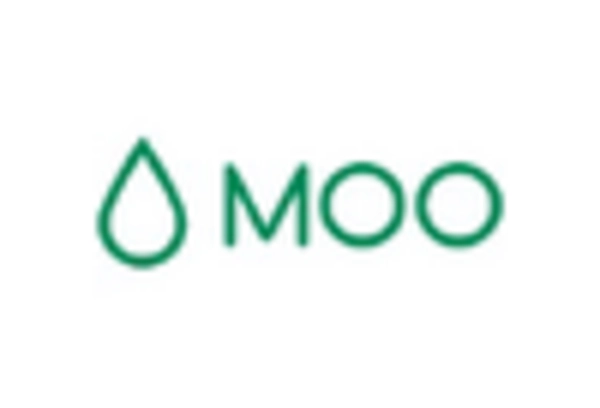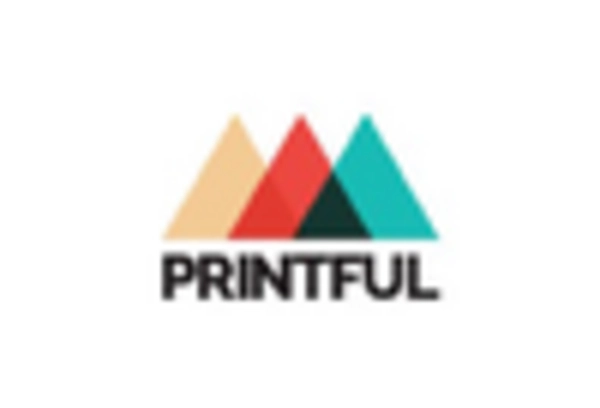Sustainability Trends
The Photo Printing and Merchandise Market is experiencing a growing emphasis on sustainability, as consumers become more environmentally conscious. There is an increasing demand for eco-friendly printing materials and processes, which is prompting companies to adopt sustainable practices. Recent surveys indicate that nearly 60% of consumers prefer brands that prioritize sustainability in their products. This shift is encouraging businesses to explore alternative materials, such as recycled paper and biodegradable inks, to meet consumer expectations. As sustainability becomes a key factor in purchasing decisions, companies that align their operations with these values are likely to enhance their brand reputation and customer loyalty.
Social Media Influence
The Photo Printing and Merchandise Market is increasingly influenced by social media platforms, which serve as powerful marketing tools. Users frequently share their photos on social media, creating a demand for printed products that capture these moments. Data suggests that approximately 40% of consumers are motivated to print photos after sharing them online. This trend is prompting businesses to integrate social media functionalities into their services, allowing users to easily convert their digital images into physical products. As social media continues to shape consumer behavior, companies that harness this influence are likely to thrive in the competitive landscape of the industry.
Technological Advancements
The Photo Printing and Merchandise Market is experiencing a surge in technological advancements that enhance the quality and efficiency of photo printing services. Innovations such as high-resolution printing, eco-friendly inks, and automated printing processes are becoming increasingly prevalent. These advancements not only improve the final product but also reduce production costs, making it more accessible for businesses to offer competitive pricing. According to recent data, the adoption of advanced printing technologies has led to a 15% increase in production efficiency across various sectors within the industry. As a result, companies are better positioned to meet the growing consumer demand for high-quality printed merchandise.
Expansion of E-commerce Platforms
The Photo Printing and Merchandise Market is significantly benefiting from the expansion of e-commerce platforms. The convenience of online shopping has transformed consumer purchasing behavior, leading to an increase in online orders for photo printing services. Recent statistics reveal that e-commerce sales in the photo printing sector have grown by over 30% in the past year. This trend is encouraging businesses to invest in user-friendly websites and mobile applications that facilitate seamless ordering processes. As more consumers turn to online platforms for their photo printing needs, companies that effectively leverage e-commerce strategies are likely to gain a competitive edge in the market.
Rising Demand for Personalized Products
The Photo Printing and Merchandise Market is witnessing a notable rise in consumer demand for personalized products. This trend is driven by consumers' desire for unique and customized items that reflect their individual tastes and preferences. Market data indicates that personalized photo products, such as custom photo books and personalized gifts, have seen a growth rate of approximately 20% annually. This shift towards personalization is compelling businesses to adapt their offerings, thereby expanding their product lines to include more customizable options. As consumers increasingly seek out products that resonate with their personal experiences, the industry is likely to continue evolving to meet these expectations.


















Leave a Comment